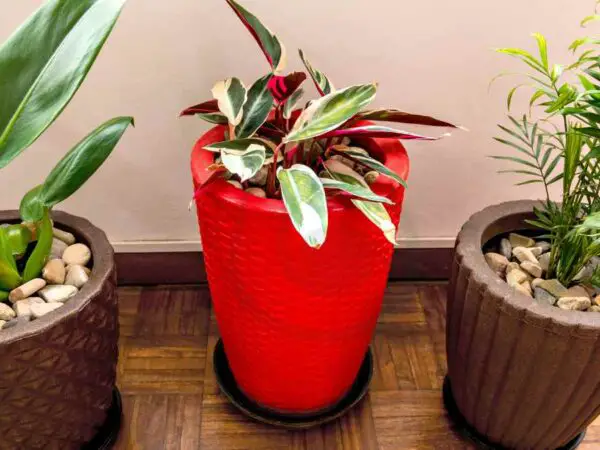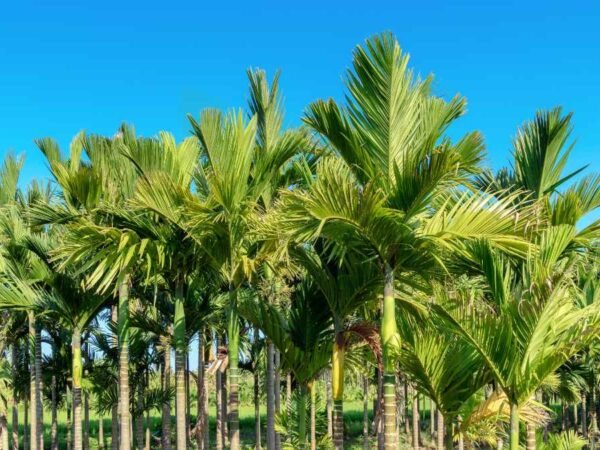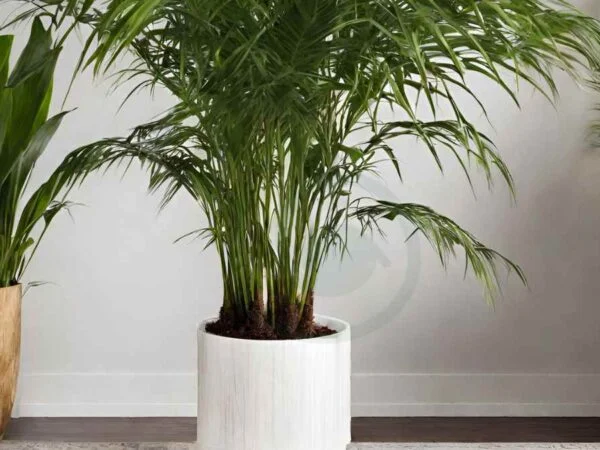If you’ve ever asked, "Why are my palm leaves turning brown?" you're not alone, and I'm here to help. Brown palm leaves can signal several issues ranging from improper watering to environmental stress. Understanding these causes will help you maintain the health and beauty of your palm. Let’s explore the common reasons for browning and how to address them effectively to keep your palm thriving.
Palm leaves turn brown for various reasons, primarily due to environmental factors. Overwatering or underwatering is the most common cause; palms need a delicate balance in their moisture levels. Browning can also result from inadequate humidity, excessive sunlight, or poor soil conditions. Nutrient deficiencies, particularly in magnesium or potassium, can also lead to discoloration. Ensure your palm is in the right light condition, receives adequate water, and is fertilized properly to prevent browning.
Ready to keep your palm green and healthy? Dive deeper into our care tips and solutions tailored to your palm’s specific needs. Visit our comprehensive guide for more practical advice and step-by-step solutions.
Key Takeaways
- Regularly inspect your palm leaves: Check for browning as it can indicate underlying issues with watering, nutrients, pests, or light exposure.
- Adjust watering habits: Ensure proper drainage and water when the top inch of soil feels dry to the touch to prevent overwatering.
- Fertilize appropriately: Provide necessary nutrients and maintain good soil quality to support healthy palm growth and prevent browning.
- Monitor for pests and diseases: Keep an eye out for common palm pests like spider mites or diseases that can affect leaf health.
- Optimize light and humidity levels: Place palms in suitable lighting conditions and maintain adequate humidity to promote vibrant green leaves.
- Prune damaged leaves and maintain cleanliness: Trim browned leaves properly and regularly clean the palm to prevent disease spread and enhance aesthetics.
Understanding Palm Browning
Symptoms
Brown leaves on palm plants are a common issue that can indicate various underlying problems. Symptoms include discoloration, dryness, and brittleness of the leaves. wilting and drooping may also be observed.
Importance
It is crucial to diagnose the underlying causes of brown leaves promptly. Neglecting this issue can lead to further damage and even death of the plant. By identifying the root cause early, appropriate remedial actions can be taken.
Impact
The presence of browning leaves can have a significant impact on the overall health of palm plants. When left unaddressed, it can affect the plant's ability to photosynthesize effectively, leading to nutrient deficiencies and stunted growth. Moreover, it can make the plant more susceptible to pest infestations and diseases.
Watering Practices and Palm Health
Adjust Watering
Palm plants require specific watering practices tailored to their individual needs. Overwatering can lead to brown palm fronds, signaling potential issues with the plant's health. To prevent this, adjust watering frequency based on the palm tree's requirements.
Proper Drainage
Ensuring proper drainage is crucial in maintaining healthy palm trees. Improper drainage can result in waterlogged soil, leading to root rot and browning palm leaves. By understanding the significance of proper drainage, you can prevent overwatering and promote optimal palm health.
Consistent Watering Schedule
Implementing a consistent watering schedule is essential for the well-being of your palm plant. Inconsistent watering can stress the plant, causing brown palm fronds and overall decline in health. By adhering to a regular watering routine, you can support the growth and vitality of your palm tree.
Nutrient Needs and Soil Quality
Essential Nutrients
Palm plants require essential nutrients such as potassium, magnesium, and manganese for optimal growth. Potassium aids in photosynthesis and fruit development, while magnesium is crucial for chlorophyll production. Manganese supports enzyme activation, promoting overall plant health.
Soil Quality Impact
The quality of the soil plays a vital role in nutrient absorption for palm plants. Well-draining soil prevents waterlogging, ensuring roots receive adequate oxygen. Compacted soil restricts root growth, leading to nutrient deficiencies and browning leaves.
Importance of Fertilisers
Using slow-release fertilisers tailored for palms is essential to address nutrient deficiencies effectively. These fertilisers provide a steady supply of nutrients over time, preventing nutrient imbalances. Palm-specific fertilisers contain the necessary micronutrients for healthy leaf coloration.
Pests and Diseases Impact
Common Pests
Palm plants are susceptible to common pests such as spider mites and scale. These tiny creatures feed on plant sap, leading to brown spots on palm leaves. Spider mites are barely visible to the naked eye and thrive in dry conditions.
Scale insects, on the other hand, appear as small bumps on the leaves and stems of palm plants. They extract plant fluids, causing brown patches and weakening the overall health of the plant. To address these issues, consider using insecticidal soap or neem oil to treat infestations effectively.
Fungal Diseases
Fungal diseases like leaf spot can also contribute to the browning of palm leaves. These diseases typically manifest as dark or light brown spots on the foliage. Leaf spot fungi thrive in warm and humid environments, making palms particularly vulnerable.
When left untreated, fungal infections can spread rapidly, leading to severe damage to the plant. To combat leaf spot, it is essential to improve air circulation around the plant and avoid overhead watering, which creates a conducive environment for fungal growth.
Treatment Solutions
To address both pest infestations and fungal diseases, it is crucial to practice proper plant care. Regularly inspect your palm plants for any signs of pests or diseases, such as distorted leaves or sticky residues.
For pest control, consider releasing beneficial insects like ladybugs or lacewings that feed on harmful pests without causing harm to the plant. Maintaining a consistent watering schedule and avoiding overwatering can prevent fungal diseases from taking hold.
In cases where pests or diseases have already affected your palm plant, prompt action is necessary. Use organic solutions like neem oil or horticultural oils to treat pests effectively while minimizing harm to the environment.
Light and Humidity Factors
Optimal Conditions
Palm plants thrive in indirect sunlight or filtered light, avoiding direct sun exposure that can lead to browning of leaves. The ideal light conditions mimic their natural habitat, ensuring healthy growth.
Maintaining the right humidity levels is crucial for palm plant health. High humidity prevents leaf browning caused by dry air, while excessive moisture can attract pests and diseases. Consistent humidity levels promote lush, green foliage.
Impact on Plant Health
Inadequate light exposure disrupts the photosynthesis process, affecting the plant's ability to produce energy. Insufficient light weakens the plant, making it susceptible to diseases and nutrient deficiencies. Consistent light exposure is essential for vibrant, green leaves.
Fluctuating humidity levels can stress palm plants, leading to brown spots on leaves. Low humidity dries out the plant, causing leaf tips to turn brown and crispy. High humidity, on the other hand, creates a breeding ground for pests and diseases.
Maintenance Tips
To maintain optimal conditions for palm plants, consider using a humidifier to regulate indoor humidity levels. Grouping plants together can also create a microclimate with higher humidity. Regularly misting the leaves can help increase moisture levels.
Avoid placing palm plants near heating or cooling vents that can cause fluctuations in temperature and humidity. Ensure proper drainage in pots to prevent salt buildup in the soil, which can also result in brown tips on leaves.
Pruning and Maintenance Tips
Proper Pruning
Pruning is essential to promote healthy palm growth and prevent leafing problems. Start by removing dead or yellowing fronds using sharp, clean pruning shears. Trim fronds at a slight angle, leaving a small margin above the trunk to avoid damaging the plant. Avoid over-pruning, as it can stress the palm and lead to further issues.
Regular Inspection
Regularly inspect your palm plant for signs of distress, such as browning leaves or pest infestations. Check the undersides of leaves for any slow release damage or discoloration. Promptly remove any affected fronds to prevent the spread of disease and maintain the overall health of the plant.
Maintenance Tips
- Provide Adequate Water: Palms require consistent watering to thrive. Ensure the soil is moist but not waterlogged to prevent root rot.
- Fertilize Sparingly: Use a balanced, slow release fertilizer specifically formulated for palms. Apply according to package instructions to avoid nutrient imbalances.
- Monitor Light Exposure: Place your palm in a location with bright, indirect light to prevent sunburn and leafing problems.
- Protect from Extreme Temperatures: Shield your palm from cold drafts or excessive heat to prevent stress and leaf damage.
- Regular Cleaning: Wipe down palm leaves with a damp cloth to remove dust and debris that can hinder photosynthesis.
- Prune Wisely: Trim only dead or damaged fronds to promote healthy growth without causing unnecessary stress.
Reviving Brown Leaves Naturally
Watering Techniques
Ensure that your palm plant is receiving adequate water. Overwatering can lead to root rot, causing brown leaves. Conversely, underwatering can also result in leaf browning. Check the soil moisture regularly and adjust your watering schedule accordingly.
Proper Drainage
Improve the drainage of your palm's pot by ensuring it has drainage holes. Excessive water accumulation at the bottom of the pot can cause root suffocation and subsequently lead to brown leaves. Consider repotting your plant if drainage remains an issue.
Light Exposure Adjustment
Monitor the amount of sunlight your palm plant receives. Excessive exposure to direct sunlight can cause leaf burn and lead to browning. Move your plant to a location with filtered light or provide shade during peak sun hours.
Nutrient Boost
Feed your palm plant with a balanced fertilizer specifically formulated for palms. Nutrient deficiencies can manifest as brown spots or yellowing leaves. Regularly fertilizing your plant can help promote new growth and restore leaf health.
Humidity Control
Maintain proper humidity levels around your palm plant. Low humidity can contribute to leaf problems such as browning tips. Consider using a humidifier or placing a tray of water near the plant to increase moisture in the air.
Preventive Measures for Healthy Palms
Adequate Nutrition
Provide balanced nutrition to prevent nutritional deficiencies that palms experience. Use a slow-release fertilizer rich in essential nutrients like nitrogen, potassium, and magnesium.
Ensure the soil pH is suitable for palm growth, typically between 6.0 and 7.0. Over-fertilizing can lead to nutrient imbalances, so follow the instructions on the fertilizer package carefully.
Proper Watering
Water your palms deeply but infrequently to maintain healthy roots and prevent overwatering. Palms are susceptible to root rot if their roots sit in waterlogged soil.
Check the moisture level by inserting a finger into the soil; if it feels dry, it's time to water. Adjust watering frequency based on the plant size, pot size, and environmental conditions.
Adequate Light Exposure
Place your palms in locations with adequate light exposure. Most palm species thrive in bright, indirect sunlight. Inadequate light can lead to stunted growth and brown leaf tips.
Rotate your plants occasionally to ensure all sides receive equal light exposure. Consider using grow lights if natural light is limited in your indoor space.
Stable Temperature Environment
Maintain a stable temperature environment to prevent leaf browning due to temperature stress. Palms prefer temperatures between 65°F and 85°F (18°C to 29°C).
Avoid placing palms near drafty windows or vents that can expose them to sudden temperature fluctuations. During winter, protect outdoor palms from frost by covering them or moving them indoors.
Summary
You've learned how to tackle the browning of your palm leaves by understanding the various factors that contribute to this issue. From watering practices and nutrient needs to addressing pests and diseases, light exposure, and humidity levels, you now have a comprehensive guide to maintaining healthy palms. By following the provided tips on pruning, natural revival methods, and preventive measures, you can ensure your palm trees thrive and remain vibrant.
Take action now to implement these strategies and transform your palm trees into lush, green beauties. Your commitment to proper care will not only enhance the aesthetics of your surroundings but also promote the overall well-being of your plants. Embrace these practices, and watch as your palms flourish with vitality.
Frequently Asked Questions
Why are my palm leaves turning brown?
Palm leaves turn brown due to overwatering, underwatering, nutrient deficiencies, pests, diseases, or inadequate light. Proper diagnosis based on specific symptoms will help determine the exact cause and appropriate treatment.
How can watering practices affect palm health?
Overwatering can lead to root rot and browning of palm leaves, while underwatering can cause dehydration and leaf discoloration. Maintaining proper watering frequency and drainage is crucial for optimal palm health.
What nutrients are essential for healthy palms?
Palms require nutrients like nitrogen, potassium, phosphorus, magnesium, and micronutrients for healthy growth. Regularly fertilizing with a balanced palm fertilizer can ensure your palms receive the necessary nutrients for vibrant foliage.
How do light and humidity levels impact palm health?
Insufficient light can cause yellowing or browning of palm leaves, while high humidity levels can promote fungal diseases. Placing palms in bright indirect light and maintaining moderate humidity levels create an ideal environment for healthy palm growth.
What are some natural ways to revive brown palm leaves?
Trimming off brown tips, improving watering practices, applying Epsom salt solution, or misting the leaves can help revive brown palm leaves naturally. Regular care and addressing underlying issues promptly can aid in restoring the health of your palms.
Image Source: Paid image from CANVA





